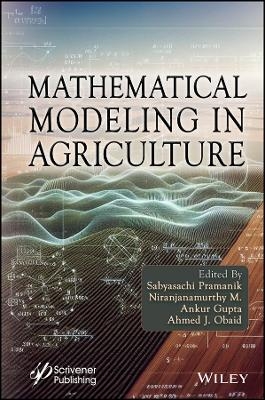
Mathematical Modeling in Agriculture
Wiley-Scrivener (Verlag)
978-1-394-23369-4 (ISBN)
- Noch nicht erschienen (ca. Januar 2025)
- Versandkostenfrei innerhalb Deutschlands
- Auch auf Rechnung
- Verfügbarkeit in der Filiale vor Ort prüfen
- Artikel merken
The research in the book looks at the likelihood and level of use of implemented technological components with regard to the adoption of different precision agricultural technologies. To identify the variables affecting farmers’ choices to embrace more precise technology, zero-inflated Poisson and negative binomial count data regression models were utilized. Outcomes from the count data analysis of a random sample of various farm operators show that various aspects, including farm dimension, farmer demographics, soil texture, urban impacts, farmer position of liabilities, and position of the farm in a state, were significantly associated with the approval severity and likelihood of precision farming technologies.
Farm management information systems (FMIS) have constantly advanced in complexity as they have incorporated new technology, the most recent of which is the internet. However, few FMIS have fully tapped into the internet’s possibilities, and the newly developing idea of precision agriculture receives little or no support in the FMIS that are now being sold. FMIS for precision agriculture must meet a few more criteria beyond those of regular FMIS, which increases the technological complexity of these systems’ deployment in a number of ways. In order to construct an FMIS that meet these extra needs, the authors here evaluated various cutting-edge web-based methods. The goal was to determine the requirements that precision agriculture placed on FMIS.
Sabyasachi Pramanik, PhD, is an associate professor in the Department of Computer Science and Engineering, Haldia Institute of Technology, India. He has many publications in technical conferences and journals, as well as online book chapter contributions. He is also a reviewer for and on numerous editorial boards for technical journals. He has authored one book and edited nine books, including books for Scrivener Publishing. Niranjanamurthy M., PhD, is an assistant professor in the Department of Artificial Intelligence and Machine Learning, BMS Institute of Technology and Management, Yelahanka, Bengalore, India. He has over ten years of teaching experience and two years of industry experience as a software engineer. He has published five books and is working on numerous books for Scrivener Publishing. He has published 54 research papers in various scientific refereed journals and filed ten patents, with two granted so far. He is a reviewer for more than 20 journals and has received numerous awards. Ankur Gupta, MTech, is an assistant professor in the Department of Computer Science and Engineering at Vaish College of Engineering, Rohtak, India. He has many publications in scientific journals and conferences and online book chapter contributions. Ahmed J. Obaid, PhD, is an assistant professor in the Department of Computer Science, Faculty of Computer Science and Mathematics, University of Kufa, Iraq. He has over 14 years of teaching experience and is a board member on numerous scientific journals. He has published over 75 journal research articles, five book chapters, 15 conference papers, 10 conference proceedings, and has edited eight books.
| Erscheint lt. Verlag | 19.1.2025 |
|---|---|
| Sprache | englisch |
| Themenwelt | Mathematik / Informatik ► Mathematik ► Angewandte Mathematik |
| Weitere Fachgebiete ► Land- / Forstwirtschaft / Fischerei | |
| ISBN-10 | 1-394-23369-8 / 1394233698 |
| ISBN-13 | 978-1-394-23369-4 / 9781394233694 |
| Zustand | Neuware |
| Informationen gemäß Produktsicherheitsverordnung (GPSR) | |
| Haben Sie eine Frage zum Produkt? |
aus dem Bereich


